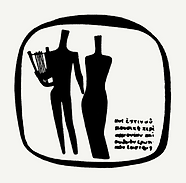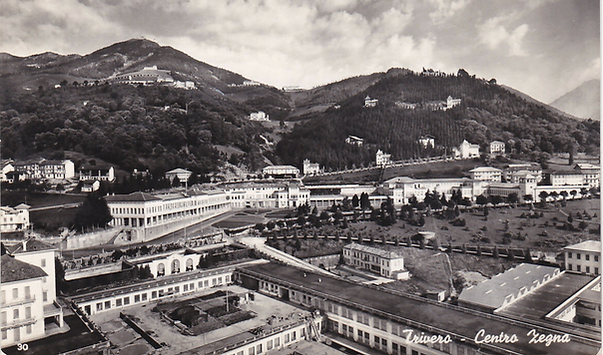top of page


ANGELO GILARDINO
The master
ANNUAL COURSES

ANGELO GILARDINO devoted a very important part of his energies to teaching, which only in the last years of his existence has become increasingly rarefied for leaving time for the Maestro's compositional activity.
Angelo Gilardino has taught for a long time in the two main musical schools of Vercelli. In 1965 Joseph Robbone, one of the most important historical personality of the musical life of the city, soul and creator of the prestigious Viotti international competition, calls him to fill the role of classical guitar teacher at the Liceo Musicale G. B. Viotti, an organization supported by the Società del Quartetto. In the classrooms of the Civic Theater and in those of Via Monte di Pietà, headquarters of the Società del Quartetto, Gilardino continued his teaching activity until 1981.
In addition to teaching at the Liceo Musicale G. B. Viotti, he also teached for several years in the Municipal School of Music "Francesco Antonio Valletti".

Joseph Robbone with Arturo Benedetti Michelangeli

In these realities a young Angelo Gilardino confronts his experiences and his technical research with a teaching level that ranges from the basics to concert preparation. These important experiences allowed him to build and distill those principles and that knowledge that later he enunciated in the guitar technique book published by Bèrben.


Vallotti school. Cloister of Santa Chiara
In 1981 he started teaching classical guitar at the "A. Vivaldi" Conservatory in Alessandria, where he taught for 23 years, leaving the classrooms of Palazzo Cuttica in 2004.
In Alessandria, Maestro Gilardino dedicates himself to students who follow the school course to obtain their diploma, through the study and consolidation of their technical, analytical and therefore interpretative skills.
The repertoire to deal with ranges from Renaissance to Baroque, from romantic to contemporary music, and Gilardino proposes an ever more aware and "scientific" methodology to solve every "enigma" imposed by the score; the method is based on principles of competence and objective cognition, of structuring and analysis of the work, principles free from impetus entrusted to instinct and personal sensitivity, qualities that the method of Work and in-depth analysis of the master Gilardino allows you to express and in the best way.



Cuttica Palace. Alexandria
Another didactic experience that kept Angelo Gilardino busy for twenty years, exactly between 1984 and 2003, took place in Biella where Giorgio Giacomelli, founder of the Lorenzo Perosi Academy of High Specialization, invited him to hold a three-year course for students who already obtained the conservatory diploma and already dedicated to a professional career. The Accademia Perosi used to have the most important artist teaching there: Aldo Ciccolini, Lazar Berman, Paul Badura-Skoda, Pavel Vernikov, Antonio Meneses, Peter-Lucas Graf, many others and Angelo Gilardino for the classical guitar.
The Perosi Academy is located in the Piazzo di Biella, the historic district of the city. Of medieval origin, it is today the artistic and cultural meeting point of the city. The village was once surrounded by walls, enclosed by monumental gates and connected to the lower part of the city by a series of small streets called "coste". It is a fascinating place full of history, architecture, deeply suggestive.
Among those "coste" numerous of the best concert players who today represent in the world of classical guitar the technical and interpretative excellence, were able to receive from Angelo Gilardino his mastery, his artistic vision, his art and his highly refined sensitivity.
connecting rod. The Piazzo



THE TEACHER
ADVANCED SUMMER COURSES

Oasi Zegna. Trivero
At the beginning of the in the 1970s, Maestro ANGELO GILARDINO began to offer his increasingly expert teaching skills even during the summer holidays, to solicit continuity of commitment and study from his most faithful students, and offer the opportunity for a new experience to students from all over the world, in those weeks free from the usual school activity.
The story that follows intended to offer a general overview of those which were the four main locations where these summer courses were held for over thirty years; soon the site will be equipped with specific pages dedicated to each one of those experiences, which have allowed a very large number of students from all over the world to meet and learn the fundamentals of Angelo Gilardino's teaching methodology.
ROASIO SANT'EUSEBIO.
About halfway between Vercelli and Biella is the small village of Sant'Eusebio, one of the five hamlets of the municipality of Roasio, surrounded by woods that promise adequate shelter from the heat and the mosquitoes that characterize the summer in Vercelli.



Roasio Sant'Eusebio
The hamlet of Sant'Eusebio is constituted by historic homes and villas built between the end of the 19th century and the beginning of the 20th by local entrepreneurs who had made their fortune in the distant lands of Kenya.
On the top of the hill, rising on the left side of the road, there is Villa Micheletti. In reality, rather than a villa, the building was a country house probably dating back to the second half of the 19th century, with an arched entrance that opened onto a cozy internal garden; to the right of the arch there was the housing structure arranged over three floors, while on the left, in place of what had once been a rustic used as a storeroom, there was a room large enough to accommodate the lessons that Angelo Gilardino taught to about ten students. Roasio's summer courses were attended by Angelo's most assiduous students and by some young foreign concert artists; the greek Kostas Cotsiolis, the finnish Seppo Siirala, the american David Leisner…
Even John Duarte's pipe left serious traces of its passage within the walls of Villa Micheletti. The experience didn't last long; the increasing number of requests to participate in the courses determined the need to find a larger, less "familiar" location.
Thus it was that the "Vacanze Chitarristiche" migrated to the county of the Zegna Family, among the Himalayan rhododendrons that Ermenegildo Zegna had wanted to dress his "panoramic" in colors, today the site of the beautiful "Oasi Zegna", which starting from Trivero reaches the winter resort of Bielmont.


Trivero. Church of San Bernardo
TRIVERO.
In Trivero the summer courses began to take on a different structure and organization from those of Roasio Sant'Eusebi0; if within the walls of Villa Micheletti it seemed that people belonging to the same "family" group were gathered, in the large building of the San Bernardo hotel everything had assumed the chrism of a more "professional" event, given the significant number of students and teachers present, and also thanks to the numerous concerts and events that accompanied the program of lessons.
Thanks to the collaboration with the Department of Culture of the Province of Vercelli, the best young concert players could hold concerts and essays in almost all the small towns located in the territories surrounding Trivero, up to Biella, Rosazza, the Valle del Cervo and the Sanctuary of Oropa. The traces of smoke left by John Duarte pipe did not spare the rooms of the opulent Hotel San Bernardo, lined with Cervo granite and marble, commissioned by the Zegna family to welcome prestigious customers from all over the world with whom the wool mill, which has always been renowned for its quality, "wove" thriving business. The students of John Duarte, a great friend of Angelo, coming from England and from various Nordic countries, met with a large "cohort" of "Gilardinian" students and with the champions of the Roman school of Sergio Notaro, among whom even then the talent of Stefano Grondona stood out, accompanied by all his family members.

The courses were held at the San Bernardo hotel for only a couple of years and this time the transfer only involved a distance of a few metres; the Zegna family, on the opposite side of the panoramic road on which they had built the Hotel San Bernardo, had had a large building built with a square structure and a large internal courtyard, to accommodate orphaned children.
Even that building was no longer used for the purpose for which it had been used for some time, and therefore became the new headquarters of Maestro Angelo Gilardino's "Vacanze chitarristiche".
In the pages that will tell that experience in more detail, you will find information on the many instrumentalists, teachers, musicians and artists who frequented and stayed at the "Caulera", and of the cultural and human "microcosm" that within its walls opened for many of them horizons that determined their entire professional and existential journey.


Lagonegro and Maratea. Basilicata
Chatillon.
Archived the teaching experience of Trivero, the "Vacanze Chitarristiche" found hospitality in Val d'Aosta, where the regional administration made available a structure in the municipality of Châtillon, and where Angelo Gilardino was able, reiterating the organizational scheme already firmly tested in the years of Trivero, hold its master classes.
It was 1993 and Angelo Gilardino was assisted by two of his extraordinary students; the concert guitarist Luigi Biscaldi, a wide-ranging musical talent and excellent teacher, and Gianni Nuti, whose cultural stature will allow him to achieve prestigious goals not only in artistic career.
LAGONEGRO.
The foundation of the cultural association "Amici della Musica di Lagonegro" is due to the musician Pino Racioppi and the architect Antonio Brigante.
Lagonegro, a town located in that strip of Basilicata that touches the Tyrrhenian Sea with Maratea, almost as if it were a wedge between the lands of Campania and Calabria, it soon became a "ritual" appointment in the summer of Angelo Gilardino, who after spending several weeks in Trivero moved there to extend his teaching efforts by another 2 weeks.
Lagonegro was the "meeting point" with the rich cultural and musical world of the "south", and for years it offered the opportunity to a long list of students and teachers of confront and study what had long been the founding features of the "School" of Angelo Gilardino, of its technical, interpretative and methodological conception.
Even Lagonegro was soon transformed into a "happy planet" in Angelo Gilardino's didactic constellation, a precious appointment for learning, listening to concerts and conferences, and enjoying a splendid territory, rich in historical and naturalistic beauties, where the marvelous blue of the sea of Maratea served as a magnificent corollary.
Lagonegro. Basilicata
Chatillon . Valle d'Aosta



Photo: ANDREA CHERCHI

bottom of page